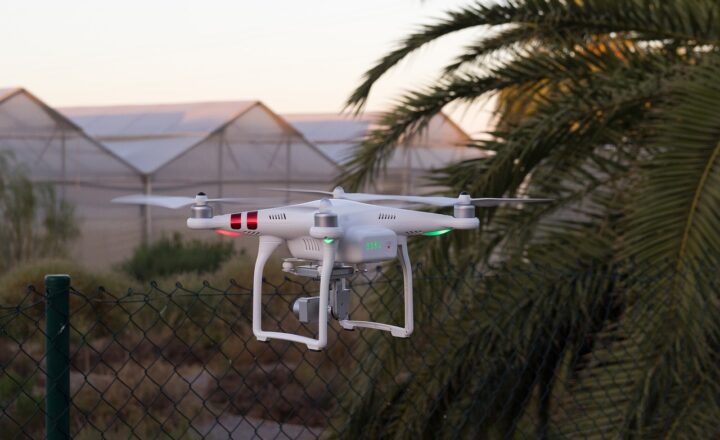Understanding Facial Recognition Technology and Its Role in AI Surveillance
November 11, 2024

Facial recognition technology is rapidly transforming the landscape of surveillance, law enforcement, and personal security. As artificial intelligence (AI) continues to evolve, facial recognition has gained traction in various sectors, owing to its efficacy in identifying individuals and analyzing behavioral patterns. This article provides a comprehensive overview of facial recognition technology, its applications, advantages, and implications for privacy and ethics.
1. What is Facial Recognition Technology?
Facial recognition technology refers to the use of AI algorithms to identify and verify individuals based on their facial features. The technology captures the facial image using a camera and compares it against a database of stored images to find a match. Key components of facial recognition systems include:
- Facial Detection: The initial phase where the software identifies and locates a face in an image or video feed.
- Feature Extraction: The process of mapping unique facial landmarks (e.g., distance between the eyes, nose shape) to create a faceprint, which is a mathematical representation of the face.
- Comparison: The system compares the extracted features with existing known images in a database to ascertain identity.
- Identification or Verification: The final step involves determining if the detected face matches any in the database (identification) or verifying if the person is indeed who they claim to be (verification).
Overall, facial recognition technology operates on algorithms that improve with exposure to new data, enhancing accuracy over time.
2. Applications of Facial Recognition Technology
Facial recognition technology has found applications across various sectors. Some of the most notable include:
2.1 Law Enforcement and Public Safety
Law enforcement agencies deploy facial recognition technology for criminal identification and tracking. Surveillance cameras equipped with facial recognition can help pinpoint wanted suspects, missing persons, or locate individuals in real-time. The police can access databases, such as the National Crime Information Center (NCIC), to cross-reference facial imagery for identification.
2.2 Access Control and Security
Organizations are increasingly adopting facial recognition for building access control systems. This technology allows for contactless entry to secure areas, enhancing security while reducing the need for physical access cards which can be lost or stolen. Additionally, airports utilize facial recognition to streamline check-in procedures and enhance overall traveler security.
2.3 Retail and Customer Experience
Retailers harness facial recognition to offer personalized shopping experiences. By recognizing returning customers, stores can tailor promotions and marketing messages based on previous shopping behavior. This capability allows retailers to enhance customer engagement and loyalty.
2.4 Social Media and Photo Tagging
Social media platforms incorporate facial recognition for automatic tagging in photos. Users enjoy the convenience of having their friends tagged without manually identifying each person, as the technology detects and recognizes faces in uploaded images.
3. Advantages of Facial Recognition Technology
The implementation of facial recognition technology offers numerous benefits:
- Efficiency: The technology enables swift identification of individuals, reducing the time for verification processes compared to traditional methods.
- Enhanced Security: With advanced monitoring capabilities, facial recognition increases security measures, deterring criminal activity in public spaces and organizations.
- Data Collection: Businesses can gather valuable data on consumer behavior and trends through facial recognition analytics, informing marketing strategies and service improvements.
- Non-intrusive Technology: Unlike fingerprinting or other biometric methods, facial recognition is non-intrusive and can work at a distance, making it more convenient for users.
4. Ethical Concerns and Privacy Issues
Despite its advantages, the use of facial recognition technology raises significant ethical and privacy concerns:
4.1 Privacy Invasion
The widespread use of facial recognition technology can lead to unauthorized tracking of individuals without consent, infringing on personal privacy rights. Citizens often remain unaware of whether they are being monitored, raising alarm among privacy advocates.
4.2 Surveillance State
There are concerns that the extensive deployment of facial recognition could pave the way for a surveillance state where governments monitor citizens constantly. This reality raises fears regarding civil liberties and the potential misuse of data.
4.3 Bias and Inaccuracy
Studies indicate that facial recognition systems may exhibit biases based on race and gender, leading to higher error rates for individuals from marginalized groups. This inaccuracy can contribute to wrongful identifications, further complicating relations between law enforcement and communities.
5. Future Outlooks for Facial Recognition Technology
Facial recognition technology continues to develop, and the future holds both potential advancements and challenges. Initiatives to improve accuracy and reduce bias are underway, focusing on ethical considerations, transparency, and accountability in deployment. Regulatory frameworks and policies will become increasingly necessary to manage how and where facial recognition is utilized, balancing its benefits with the need for privacy and civil liberties.
Conclusion
Facial recognition technology is a powerful tool with profound implications in modern society. As its use expands across law enforcement, security, and commercial sectors, vested interests must prioritize ethical guidelines and regulations to ensure that it serves to enhance security without compromising fundamental rights. The ongoing debate surrounding the balance between security and privacy is likely to intensify, shaping future innovations and policies in facial recognition technology.
Whether you view it as a security measure or a threat to privacy, understanding facial recognition technology is crucial in navigating our increasingly digitized world.







